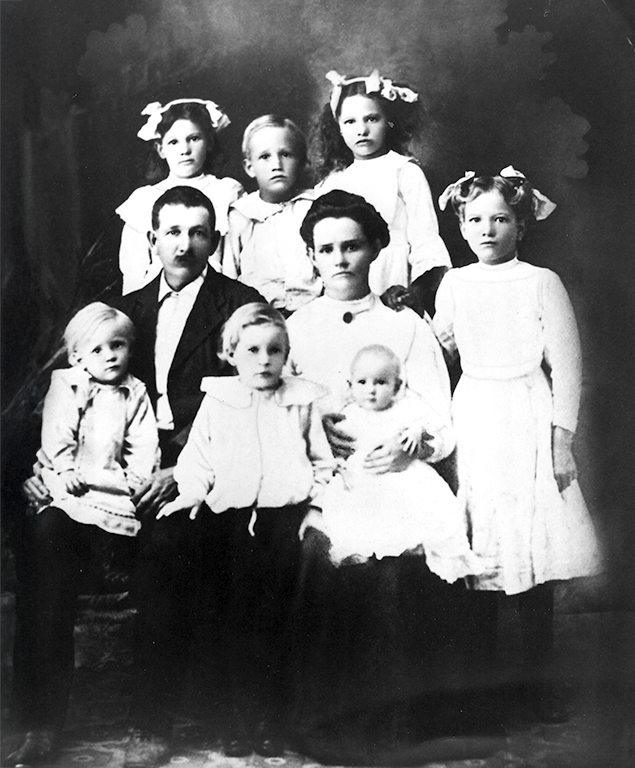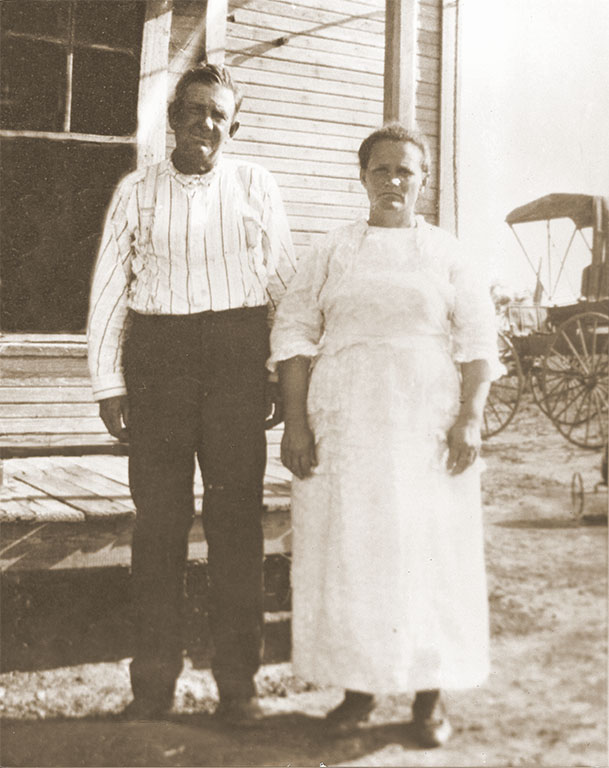Tracing My Great-Grandfather’s Hidden Past
Charles Henry Smith
The Man Behind The Name
This photo was taken in 1909. It shows my great-grandparents, Charles Henry Smith and Sarah Evelyn “Vermillion” Smith, along with seven of their eleven children. The boy standing in the back row is my grandfather, William Henry Smith, born on February 27, 1903, in Athens, Henderson County, Texas.

Family Legend
We always heard that Charles Smith came from Ireland and arrived in America as an indentured servant. According to the story passed down, he had a cruel master who beat him. One day, after another beating, Charles fought back and accidentally killed the man. After that, he ran away, changed his name, and eventually settled in Texas, where he met my great-grandmother Sarah.
Family members didn’t know if any of it was true. However, the mystery stayed in our family for generations. That led me to tracing my great grandfather’s hidden past.
Breaking Down the Brick Wall
I began researching my family history in 2003 when online tools were limited and very few people used DNA testing. At the time, solving a mystery like this wasn’t something you could do overnight. Instead, it took years of digging, checking sources, and running into dead ends.
Eventually, I asked several of my male cousins to take Y-DNA tests. Through that process, I started tracing their matches, which led me to the Underwood family line—specifically William Riley Underwood and Mahala Ann Tucker of Missouri. They had six sons and four daughters.
After narrowing it down, I found one possible match: Munceford C. Underwood. Then I found a Facebook group for Underwood descendants and started asking questions. Not long after, a distant cousin named Gloria reached out. She had documentation—and she knew the full story.
The Truth About Munceford
Charles Smith was born Munceford C. Underwood in Missouri in November 1869. He married Nancy “Sisk” Underwood on August 28, 1892. Not long after, she became pregnant.
In March 1893, Munceford’s teenage brother-in-law claimed that a man had thrown rocks at him and threatened his life. Munceford grabbed a rifle and went to confront the man. No one knows exactly what happened next, but newspapers reported that Munceford shot and killed him.
Police arrested him, and he pleaded insanity. A judge sentenced him to five years in an asylum. But on the way there, Munceford escaped custody. He changed his name to Charles Henry Smith and moved to Texas—leaving behind his pregnant wife, whom he never divorced.
A New Life in Texas
By late 1893, Charles worked as a ranch hand on Sarah’s family farm in Sunset, Texas. They married in Hill County, Texas on December 23, 1894, and eventually had eleven children.
We don’t know what Charles told Sarah about his past, or whether she learned the truth. Given that she did speak of the name change, but wouldn’t talk about the story behind it, she probably was aware of the whole situation. It is known that he established a new life and identity, blending into the rural Texas community where family, farming, and hard work shaped everyday life. Over time, his past seemed to fade, replaced by the roles of husband, father, and provider.
In conclusion, they stayed married for 38 years. Charles died in 1932 and Munceford lived the rest of his life as Charles Smith. Tragically, he left behind a young wife and baby daughter. The impact of that absence was felt for generations, and it’s a sorrowful chapter in the family’s story that continues to raise unanswered questions.
Folklore with a Thread of Truth
The original family story wasn’t entirely accurate, although it wasn’t far off either. A name change, a man on the run, and a dramatic escape were all true. Although the details blurred over time, the heart of the story—the mystery and the reinvention—was there after all.
Charles and Sarah late
1920s or early 1930s

If You’re Stuck on a Brick Wall
Here are a few things that helped me solve this mystery:
- Family folklore may include fiction, but it often contains real clues.
- If records vanish, ask why. Look for name changes, remarriages, and legal trouble often explain the gaps.
- Track the people around your ancestors—neighbors, witnesses, and spouses’ family members can guide you to the truth.
- Meanwhile, be patient. Some brick walls take years to break down.
Start Your Family History Journey!
Feeling stuck in your research?
I’ve created beginner-friendly Family History Book Templates to help you organize your discoveries and start telling your family’s story—whether it’s straightforward or filled with twists and surprises you will without a doubt give your descendants the wonderful gift of knowing where they came from.
✅ Easy to edit
✅ Perfect for preserving memories
✅ Ideal for any stage of research
You never know what you’ll uncover, for example, one photo or the right question might open a whole new chapter.